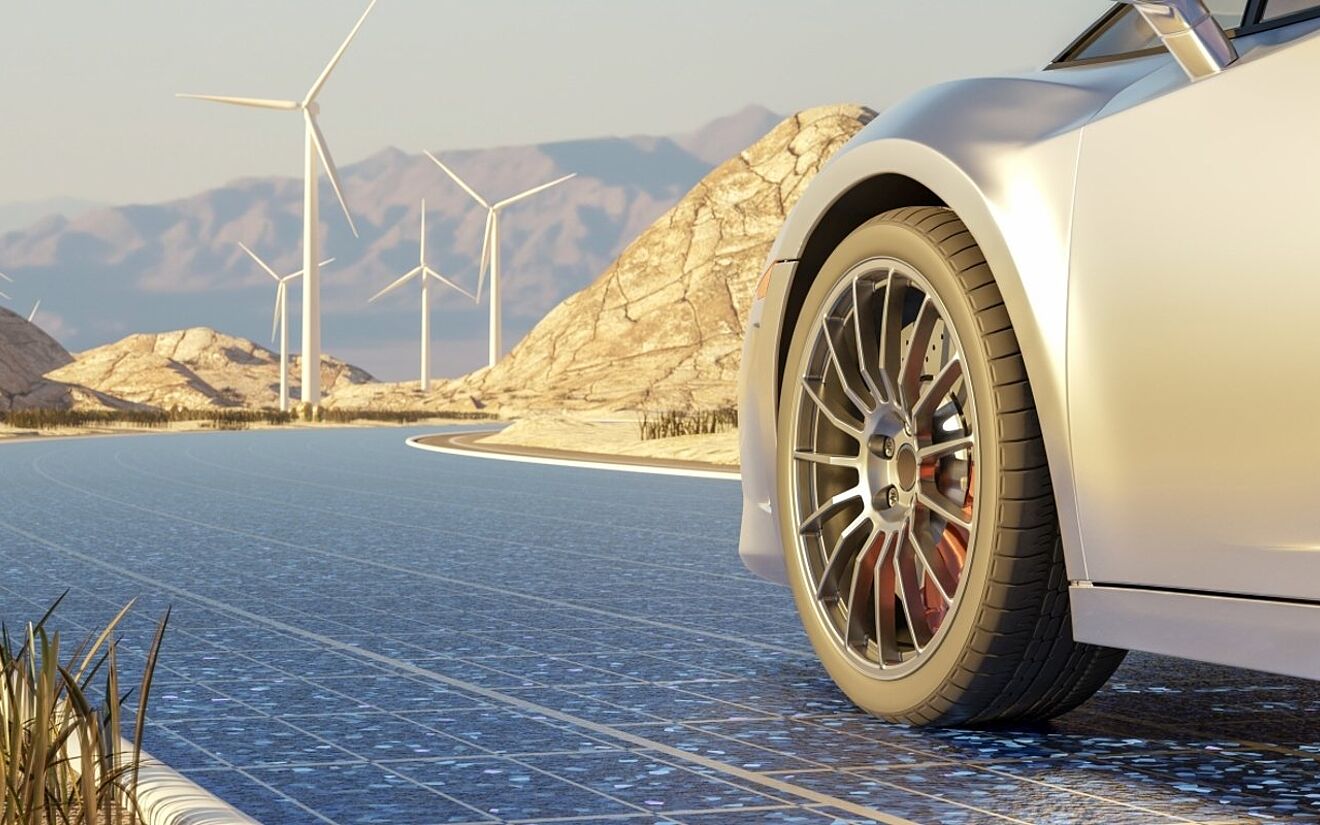ALLPLAN Bridge is Now ALLPLAN Civil: What the Name Change Means for Users
Renewable energies are on the advance - and are increasingly changing our landscapes as well: if you look out in the open, you are very likely to see wind turbines somewhere in the panorama. Solar plants also shape our environment by occupying large areas. If you want to generate solar energy on a large scale, you need a lot of space. We have already reported on a solution to this space problem in the form of transparent solar cells. Meanwhile, China is targeting built-up areas that are abundant: Roads. Here, solar cells are not only intended to generate electricity, but also to make traffic arteries more durable and smarter.
The idea is obvious and therefore not entirely new: roads are practically everywhere. So why not use the enormous surface potential of this ocean of asphalt for solar energy? Pilot projects are already underway. In the Netherlands, a cycle path was very successfully equipped with solar cells in 2014. The French construction company Colas has opened several test tracks on its Wattway in recent years, including a section of federal highway in Normandy about one kilometer long. The pilot project by solar cell manufacturer Shandong Pavenergy and the state-owned road construction company Qilu Transportation in Jinan should, however, represent a new milestone for the development of solar roads in terms of size and resilience.
Best location: motorway
The new test track was completed at the end of 2017 in the capital of Shandong Province, where it forms part of the two kilometre urban motorway - the ultimate endurance test for a solar road. With an area of 5,875 square meters of solar cells, it is expected to generate around one million kilowatt hours of electricity per year and thus electrify around 800 households. In fact, the city ring is an excellent place for electricity production, as the consumers are in the immediate vicinity and thus there are practically no losses in electricity transmission.
Robust coating system
Up to now, experts have mainly seen problems with load-bearing capacity and friction in solar cells as road surfaces. As motorway surfacing, the solar cells have to withstand more or less a constant pressure of several tons, and that for years. According to Shandong Pavenergy, their cells can not only withstand enormous pressure, but are also designed to last for 20 years. The secret lies in their three-layer construction: The top layer consists of a translucent concrete mixture that provides flexible protection for the second layer - the actual silicon solar cells. A waterproof protective insulation forms the bottom layer.
The second problem, friction, was also solved by the developers around Zhang Hongchao, civil engineer and professor at Tongji University in Shanghai. Using a complex polymer, the surface produces even slightly more friction than conventional asphalt. According to test drivers, it runs on the test track like a normal road.
Expensive, but ...
The technology is still quite expensive: even in China, a square meter of solar highway is expected to cost around 350 euros. Even in view of its long service life, this is still more expensive than having an ordinary road serviced every few years. According to Shandong Pavenergy, however, the price will fall as the number of units rises and solar roads are extended over large areas. It should also not be overlooked that the solar road pays for itself to a large extent through electricity generation, which will never be the case with conventional roads.
Experts still doubt whether the solar cells are suitable for every road. For example, Kara M. Kockelman, Professor of Transport Engineering at the University of Texas, said in an interview with the New York Times that the cells would not be suitable for US roads because they would contract too much under load due to the very high asphalt content. The cells, which can withstand enormous pressure but break all too easily under bending, would have a problem here. Nevertheless, Qilu Transportations would like to take up the challenge of building solar roads in the USA as well.
Street evolution and "street crime
Whether ready for all roads or not, what the solar road in Jinan can do is impressive in itself. In the near future, the cells will be equipped with additional capabilities. One of these will be the wireless charging of electric cars. The technology for this already exists and has been successfully tested several times. In addition, a kind of anti-theft device would probably be advisable: Within a few days of completion, several square meters of solar cells were milled and stolen from the street by thieves. Qilu and Pavenergy suspect industrial espionage.




